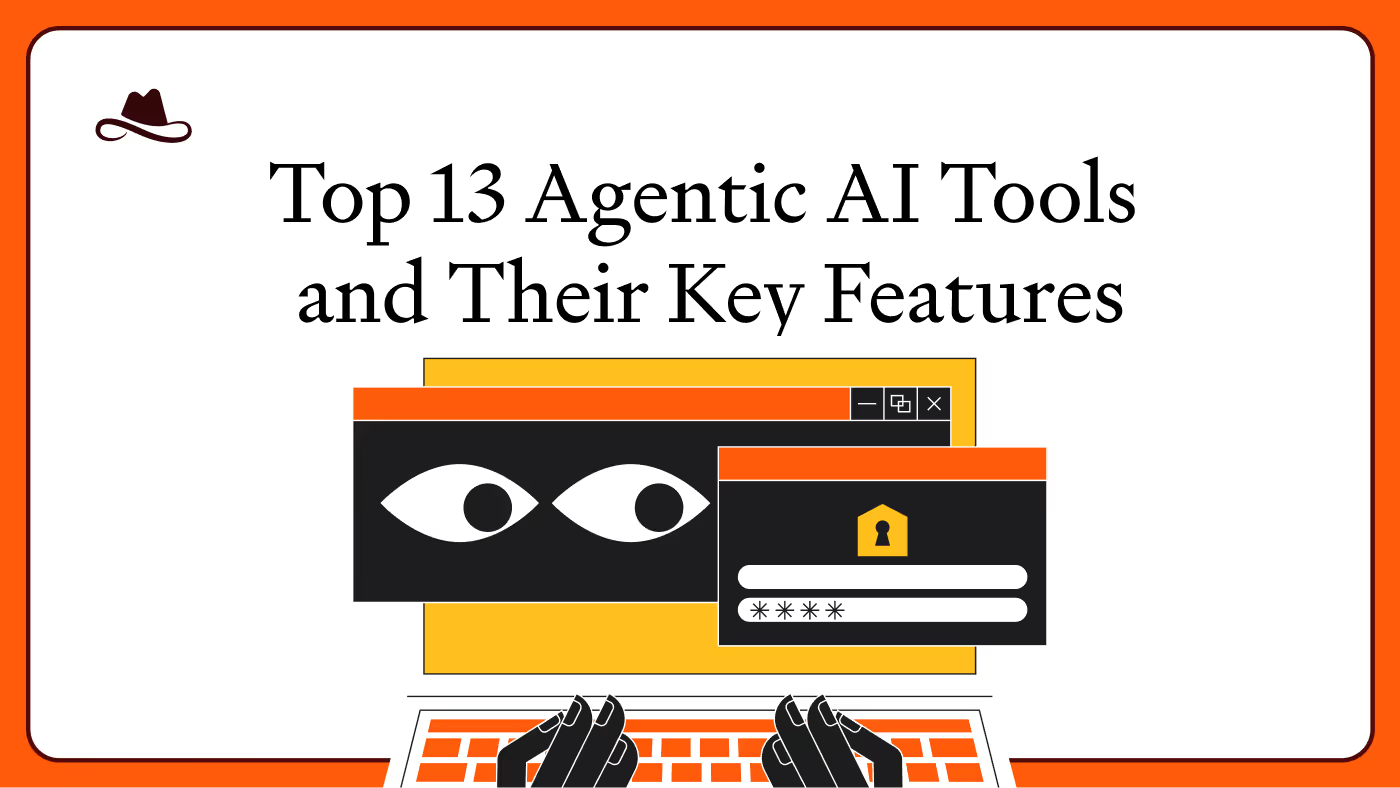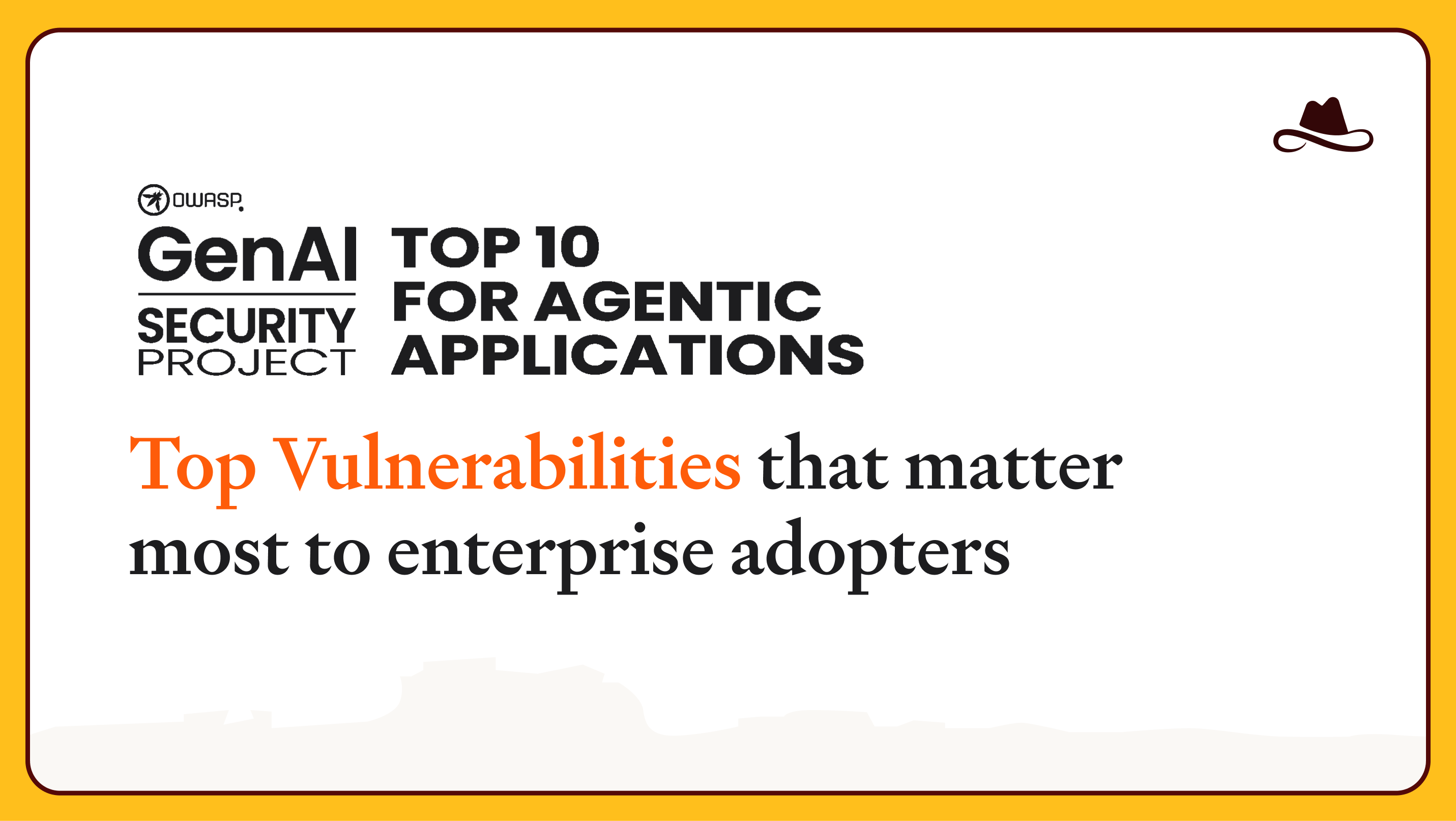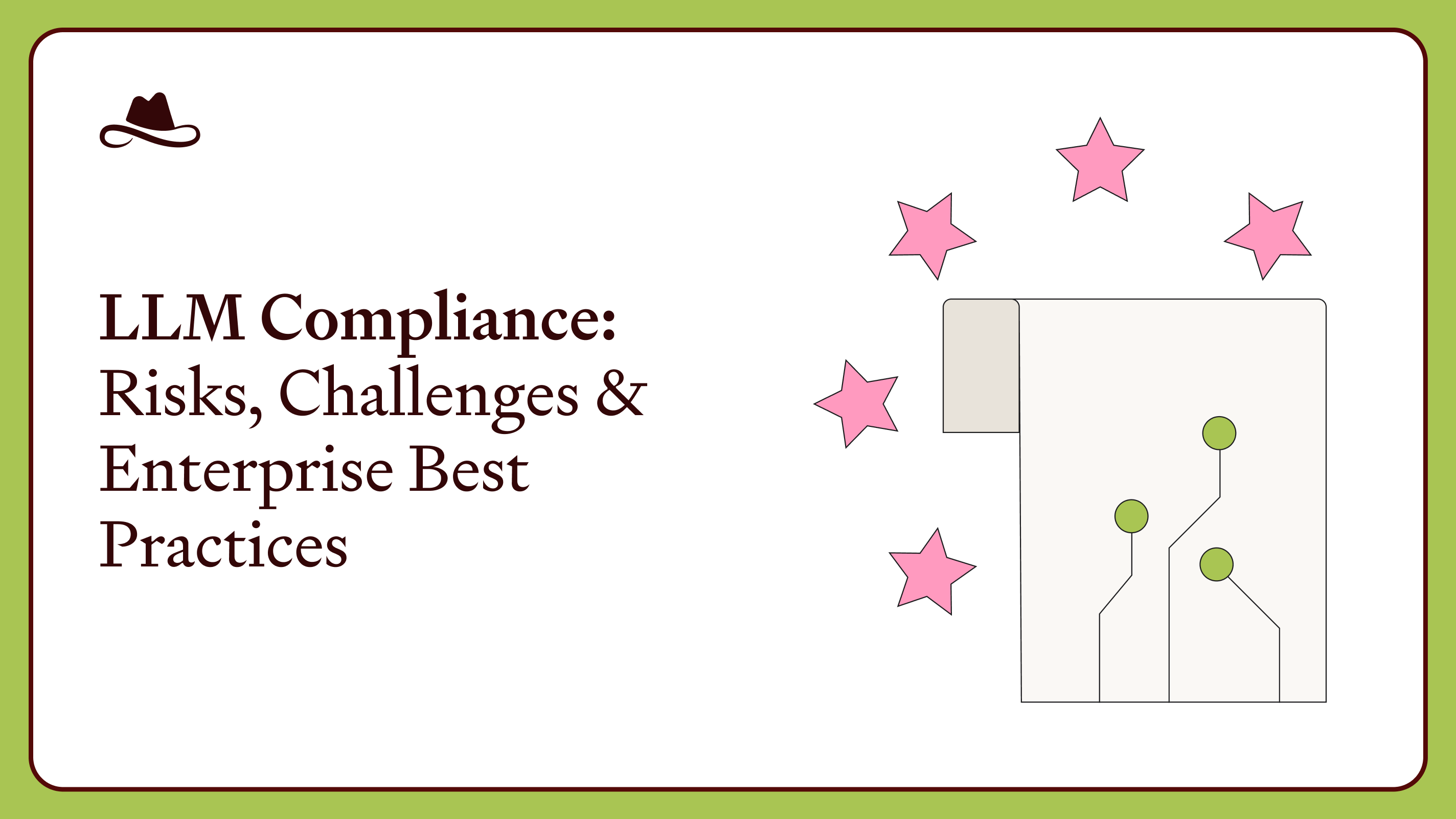The AI capabilities of copilots were cutting-edge in 2024. But they’ve hit a ceiling, limited by their reliance on human prompts and their inability to reason across tools or tasks.
In their place, enterprises are adopting agentic AI tools that can plan, act, and adapt across complex systems without waiting for a prompt. In this article, we discuss how agentic AI tools are reshaping enterprise systems, transforming static workflows into dynamic, autonomous operations that respond in real time to evolving demands.
Understanding the real capabilities of these tools, and how to choose wisely, has become a core element of strategic planning for teams aiming to stay ahead.
What Are Agentic AI Tools?
Agentic AI tools are autonomous AI applications that plan, execute, and adapt complex tasks without constant human input. These agents leverage advanced learning systems, such as LLMs and memory-driven reasoning engines, to make decisions and operate autonomously across enterprise environments.
Unlike traditional automation tools or simple copilots, agentic AI tools take initiative: they assess context, make decisions, orchestrate tasks across multiple applications, and collaborate with other agents to achieve business goals.
These systems combine large language models (LLMs) with orchestration engines, API integrations, and memory modules to act as intelligent agents. From cybersecurity to customer support, agentic AI is emerging as a transformative force in enterprise tech stacks. To cite just one use case, Gartner predicts that by 2029, 80% of customer support issues will be handled by an AI agent.
Evolution from Copilots to Full Agents
The shift from copilots to fully agentic AI solutions reflects the growing demand for AI that goes beyond reactive task completion. While copilots assist users based on specific prompts, agents proactively identify what needs to be done, determine the best method, and execute workflows end-to-end.
This evolution is driven by three major changes:
- Multi-agent frameworks like LangGraph and AutoGen allow agents to collaborate and delegate tasks.
- API integration maturity makes it easier for agents to interact securely with enterprise tools.
- Context-aware memory to improve continuity across tasks, allowing agents to reason with historical data.
That evolution is now materializing in a new generation of agentic AI platforms and tools built to deliver autonomy, context-awareness, and orchestration at enterprise scale.
13 Leading Agentic AI Tools in 2025
1. Microsoft Copilot Studio
A low-code environment for building autonomous agents directly within the Microsoft 365 ecosystem. Copilot Studio leverages Microsoft’s Power Platform and Entra ID for secure identity-aware interactions. Agents can now execute persistent, memory-enabled workflows that span SharePoint, Teams, Outlook, and external connectors via the Microsoft Graph API. These features make Microsoft Copilot Studio ideal for enterprise-grade task automation within a tightly governed stack.
2. CrewAI
An open-source framework for building structured, multi-agent AI tools that can plan, reason, and collaborate to complete tasks. CrewAI supports role-based agent design and message coordination, giving users fine-grained control over how agents interact. It’s framework-agnostic at its core but can integrate with other LLM stacks like LangChain if needed, offering flexibility for both new builds and existing AI workflows.
3. Adept AI
Adept’s ACT-1 (Action Transformer) model learns to use existing enterprise software interfaces by observing human demonstrations. Rather than relying on APIs, it mimics user interactions on-screen, executing multi-step workflows across CRMs, spreadsheets, and browsers. Designed for embedded autonomy in knowledge work, Adept prioritizes reasoning over prompt completion and is notable for its end-user alignment focus.
4. UiPath Automation Platform
Combines traditional RPA with AI and LLMs to create intelligent automation agents that can understand natural language and manipulate UI elements or APIs. Through integrated AI capabilities, including Communications Mining and AI Trust Layer, UiPath enables more sophisticated process automation with natural language processing and semantic understanding. As a leader in agentic process automation, UiPath supports advanced workflow management, AI integrations through their marketplace, and comprehensive security controls.
5. Anthropic Claude
Claude 4 includes advanced tool-use capabilities, extensive context windows, and chain-of-thought reasoning optimized for compliance-sensitive domains. Claude emphasizes constitutional AI principles, reducing the risk of harmful outputs. It's accessible via API and web interface, and is increasingly used for drafting policies, reviewing contracts, and performing analysis in legal and regulated sectors due to its focus on safety and helpfulness.
6. IBM Watsonx Orchestrate
An AI-powered automation platform built on IBM's foundation models that orchestrates enterprise workflows using natural language processing. Watsonx Orchestrate combines LLM capabilities with structured business processes and includes pre-built agents for domains like HR, sales, and procurement. Integrated with IBM's comprehensive data governance stack (watsonx.governance), it's specifically designed for compliance-heavy industries like insurance, banking, and the public sector, offering automated regulatory compliance and risk management capabilities.
7. AskUI
AskUI uses computer vision and screen understanding to enable agents to interact with any application, regardless of whether it has an API. It trains agents to understand UI elements visually, identify buttons, text fields, and data tables, and interact with them contextually. This makes it a powerful tool for automating legacy systems, internal dashboards, and vendor portals where API integration is not feasible.
8. Relevance AI
An agent platform tailored for marketing and analytics use cases. It features a visual canvas for workflow design and supports no-code configuration of multi-step pipelines. Relevance AI agents can trigger actions in CRMs, parse large datasets, generate reports, and optimize campaigns—all while using embeddings and RAG to maintain brand and compliance alignment. It’s frequently used for automating customer journey analysis and content operations.
9. Zapier AI
An evolution of Zapier’s automation engine that introduces LLM-based agents capable of creating and editing Zaps through natural language. These agents can suggest optimizations, auto-resolve errors, and integrate conditional logic. The system supports 6,000+ apps and includes a GPT-powered interpreter that can call external APIs, making it a lightweight entry point for AI-powered task automation across SaaS tools.
10. AutoGPT / Open Interpreter
Experimental agentic platforms favored by developers and researchers. AutoGPT autonomously plans and executes goals using memory, file storage, and tool plugins. Open Interpreter focuses on executing commands across a user’s system, including code execution, file management, and browser interaction, via a chat interface. Both are best suited for local deployment or sandboxed environments with flexible access to host systems.
11. Orby AI
An enterprise AI agent platform that automates complex business processes with a strong emphasis on auditability and compliance. Built on their proprietary Large Action Model (LAM), Orby focuses on enterprise-grade security, governance, and regulatory compliance from the ground up. The platform is designed for cross-departmental workflows and provides automated fraud detection, compliance checks, and audit capabilities, making it suitable for risk-sensitive enterprise environments.
12. Comet (by Perplexity)
Comet is a lightweight, browser-embedded AI agent built to navigate, interact with, and automate tasks across the web. It can search, extract, summarize, and interact with web content across multiple tabs. Perplexity’s LLM backend gives Comet the ability to perform autonomous research loops and data collection in open-browser environments. Its human-in-the-loop design makes it especially well-suited for high-trust workflows that still benefit from AI-driven speed and scale.
13. DIA (Diabrowser)
DIA is a browser-native AI agent that turns any webpage into an interactive workspace. Rather than relying on backend APIs, DIA interprets and interacts with the DOM in real time, allowing it to click, type, extract, and navigate across websites like a human user. Its local-first architecture emphasizes privacy and speed, making it ideal for automating repetitive web tasks such as form filling, research synthesis, and multi-tab workflows.
Key Capabilities of Agentic AI Tools
Agentic AI tools bring together a range of capabilities that allow them to operate autonomously, respond intelligently to changing contexts, and integrate across complex systems.
Task Planning and Execution
These tools can independently break down goals into subtasks and execute them sequentially or in parallel. For example, in supply chain management, agentic tools can proactively reroute shipments based on weather disruptions, automate vendor coordination, and balance inventory levels across global warehouses, reducing downtime and excess stock. Agentic AI solutions in this context can automate what once required full operations teams.
Workflow Orchestration Across Tools
Agents can integrate and trigger workflows across multiple software platforms. For example, in government agencies, agents can process benefits applications by integrating data from identity verification, tax records, and eligibility scoring tools, streamlining multi-step workflows that used to take days.
Multi-Agent Collaboration
AI agents can assign roles and delegate tasks among multiple agents with distinct capabilities. In financial services, one agent can handle regulatory compliance checks while another validates customer onboarding. These agents collaborate to reduce false positives and speed up approvals without breaching internal controls. Of course, this collaboration also increases risk, which we’ll get to later.
Real-Time Adaptation and Feedback Loops
Agents adapt based on new data, environmental changes, or policy shifts. In a healthcare setting, agents monitoring patient vitals can adapt treatment recommendations by ingesting EHR updates, flagging medication interactions, and alerting care teams when anomalies are detected.
Secure API Access and Tool Integration
Guardrail-enabled agentic tools can operate securely across APIs while maintaining robust access controls. In a law enforcement context, agents can retrieve case files, cross-reference databases, and redact sensitive information before surfacing insights while respecting RBAC and audit logging policies.
Contextual Reasoning and Decision-Making
These tools can recall prior steps, weigh historical data, and apply logic across sessions. In insurance claims, agents can compare current requests to similar past cases, assess policy exceptions, and determine payouts. This minimizes the time cost and error risk of human review, leading to improved accuracy and consistency.
Business Benefits of Agentic AI Tools
The capabilities outlined above aren’t just technical wins. They translate directly into measurable business value across sectors. As agentic AI becomes more embedded in enterprise systems, its impact is being felt in everything from cost optimization to risk reduction. Below, we explore key business benefits, each tied to real operational challenges.
Streamlining SaaS Workflows
By orchestrating tasks across multiple cloud-based applications, agentic tools eliminate bottlenecks and reduce context switching. This is especially valuable in IT and customer support, where repetitive processes like ticket triage, account updates, or log retrieval often span different platforms.
Reducing Manual Load for Security Teams
Security teams are increasingly overwhelmed by signal overload and repetitive tasks. Agentic AI can triage low-priority alerts, automate log correlation, and even initiate first-line investigations. In SOC environments, agents help security analysts focus on high-impact threats by offloading routine analysis.
Automating Compliance and Risk Reviews
Enterprises in regulated industries like banking, pharma, and healthcare spend significant resources on manual compliance checks and documentation. Agentic tools can continuously monitor for anomalies, generate audit-ready logs, and enforce policy-based decision-making at scale. This accelerates compliance reviews and reduces the likelihood of human error.
Improved Incident Response Time
Because agentic tools can reason in real time and initiate workflows without human prompting, they dramatically reduce mean time to resolution (MTTR) in critical incidents. In sectors like utilities or finance, this capability can mean the difference between service continuity and significant downtime. According to IBM’s Cost of a Data Breach Report, organizations that extensively deployed AI and automation across their security workflows saved an average of USD 2.2 million per breach compared to those that did not. These savings stem from faster detection, faster containment, and greater overall resilience across preventative and reactive security processes.
Enhanced Productivity with Less Engineering Effort
Deploying intelligent agents means that business users can define goals using natural language or visual interfaces, which reduces the need for custom code or constant engineering support. This shift empowers non-technical teams to create and adapt AI-driven workflows on the fly.
How to Choose the Right Agentic AI Tool for Your Stack
Choosing the right tool depends on more than feature lists or vendor reputation. The table below breaks down essential criteria to help security, IT, and strategy teams evaluate agentic AI tools based on operational needs, governance requirements, and integration depth.
Future Trends in Agentic AI for Enterprises
The next wave of agentic AI isn’t just about smarter agents. It’s about interoperable architectures, governed autonomy, and vertical specialization. Let’s look at the technical shifts driving this evolution.
Closed vs. Open Architectures
Enterprises will increasingly demand transparency and extensibility. Open-source agent frameworks such as LangGraph and AutoGen are leading the charge by enabling composability and interoperability across different agent systems.
Domain-Specific Agent Stacks
We'll see purpose-built agents for highly specialized verticals like biotech R&D, legal contract analysis, or threat intelligence. These stacks often integrate fine-tuned LLMs with custom memory, tools, and reasoning flows.
AI Governance, Transparency & Control
As enterprises scale up agent usage, they'll need deeper visibility into decision chains. Expect increased adoption of AI observability tooling and lineage tracking to ensure agents comply with governance frameworks like NIST's AI RMF.
Rise of Interoperable Agent Frameworks
Organizations will invest in flexible multi-agent orchestration that supports message passing, dynamic role assignment, and memory sharing across agents. This will unlock more complex cross-functional workflows previously gated by siloed automation tools.
How Lasso Enables Secure Agentic AI Adoption
Agentic AI tools offer remarkable benefits, from orchestrating complex workflows to adapting autonomously in real time. But these same capabilities introduce new agentic AI security threats: unauthorized data access, opaque decision-making, and agent behaviors that can escape traditional governance.
Lasso enables enterprises to embrace the full potential of agentic AI while maintaining security, visibility, and control. Here’s how:
- SaaS Visibility Layer for Agentic Tools: Lasso offers continuous discovery and observability into how agentic tools interact with enterprise data, identifying unmonitored access points and policy violations.
- Context-Aware Risk Scoring for AI Interventions: Lasso’s AI engine dynamically scores interactions based on context, identifying anomalous agent behaviors and suggesting remediations.
- Safe Delegation of Security Tasks to Agents: With proactive guardrails, Lasso enables agents to handle security tasks like log analysis or compliance checks while minimizing risk.
- Role-Based Guardrails for AI Actionability: Administrators can configure guardrails based on user roles, ensuring that agents act within approved boundaries and never operate unchecked.
Conclusion
Agentic AI is no longer an experimental concept, but a core part of the 2025 enterprise toolkit. The most effective deployments will be those that combine capability with security, interoperability with governance.
Choosing the right agentic AI solution, then securing it with platforms like Lasso, will be the difference between adoption and exposure.
Without that security layer, your agents will be making decisions you can’t always see. Now is the time for your security team to gain visibility into autonomous workflows, before they evolve out of scope.
Agentic AI is already in your stack. Now’s the time to secure it.






